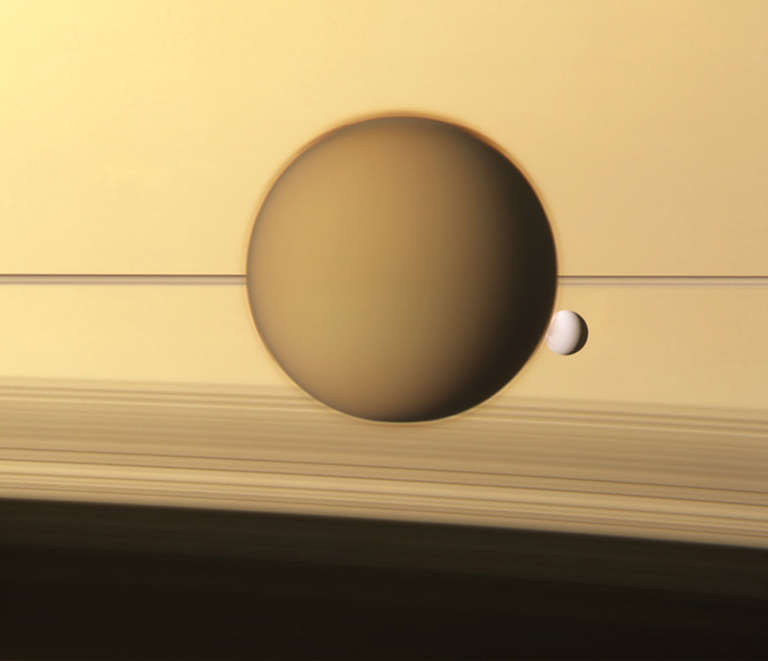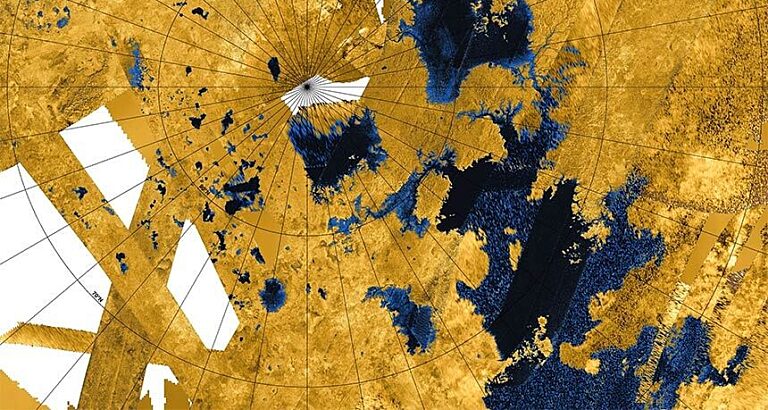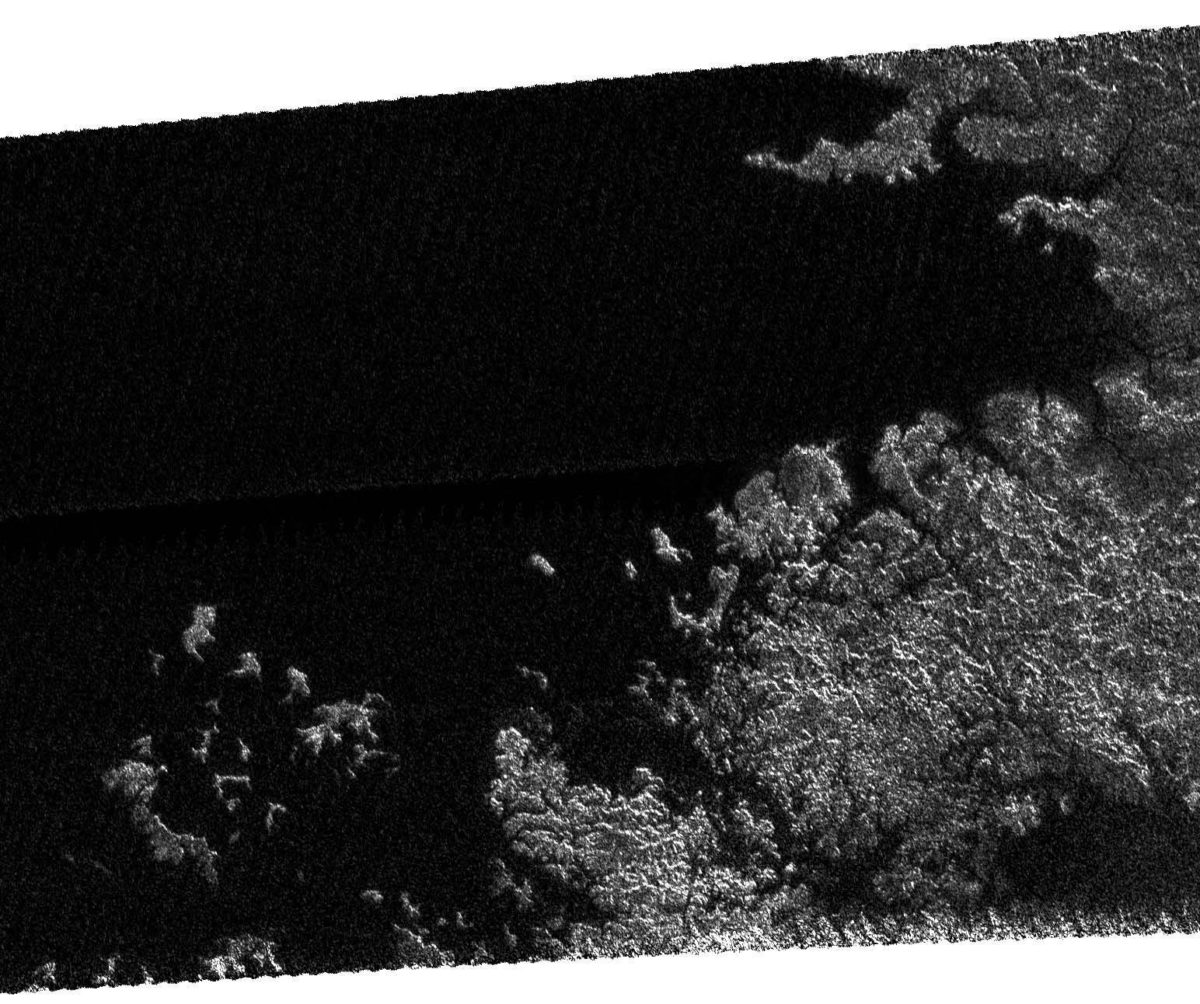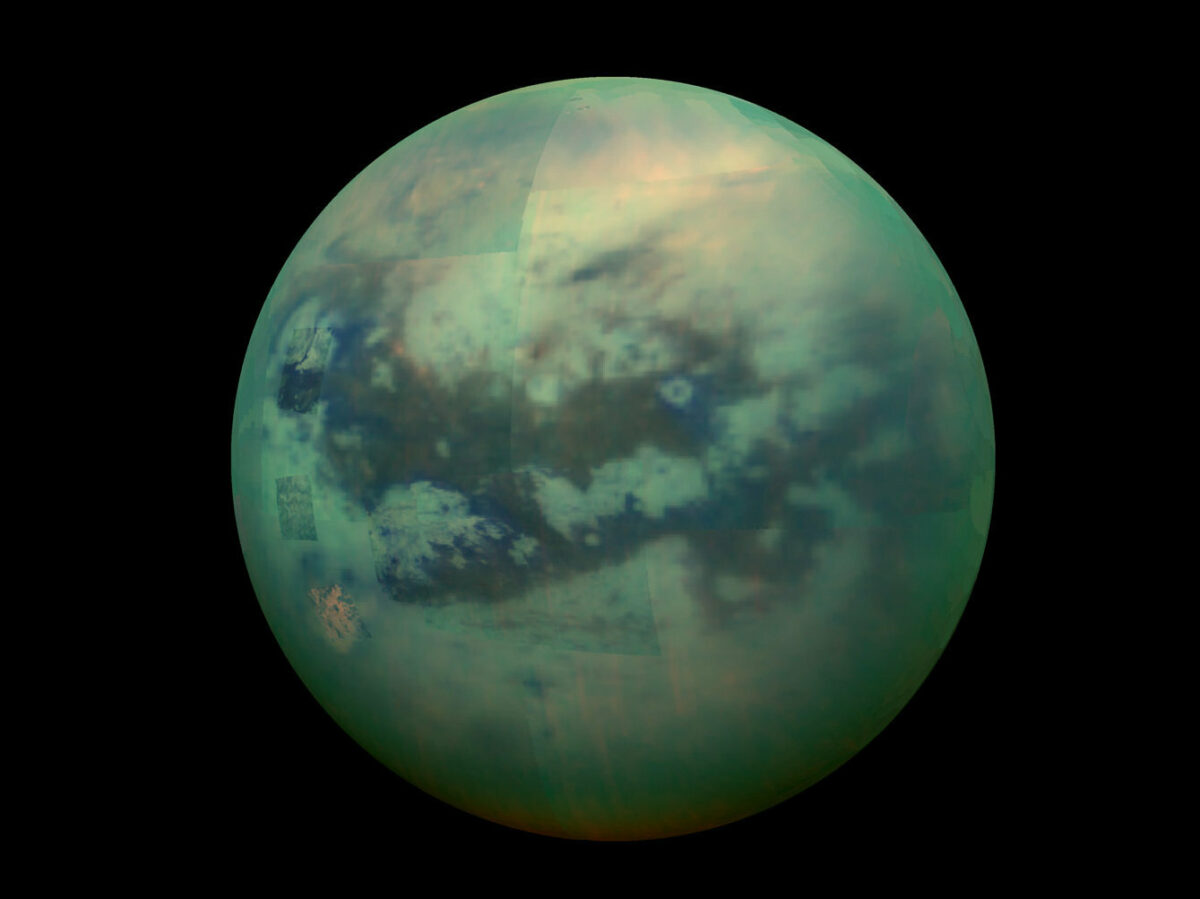Kate Howells • Jun 25, 2024
What would it be like to stand on the surface of Titan?
With its mountains of ice, dunes of hydrocarbons, and methane/ethane seas, Saturn’s moon Titan is one of the most intriguing and alien worlds in our Solar System. But while some of its vistas may seem similar to those seen on Earth, standing on the surface of Titan would be a very unusual experience.
A chilly, thick atmosphere
At an average distance of 1.4 billion kilometers (886 million miles) from the Sun, Titan is a frigid world. Its average surface temperature is about -179 degrees Celsius (-290 degrees Fahrenheit). So to visit Titan, you’d need a heavily insulated space suit.

Titan is the only moon in the Solar System with a thick atmosphere, which completely obscures its surface at visible wavelengths. But unlike Venus, whose dense atmosphere creates crushing pressure at the surface, atmospheric pressure on Titan is only about 1.5 times that of Earth at sea level. This would make the atmosphere noticeably thicker, but not dangerous.
At its extreme distance from the Sun, Titan gets about 1% as much sunlight as Earth, and only about 10% of that 1% gets through the atmosphere to the surface. This still provides more light than you might think. If you were standing on the surface of Titan it would look hundreds of times dimmer than daytime on Earth, but that’s still considerably brighter than a fully moonlit night.
The thick atmosphere, composed primarily of nitrogen and methane, would obscure your view of the Sun and, sadly, Saturn. The air would likely look hazy, with limited visibility. And because of the composition of Titan’s atmosphere, it would also add an orange tint to whatever view you might take in.
Ice mountains and cryovolcanoes
Titan’s surface is largely made of solid water ice, which, at these temperatures and pressures, would be as hard as granite. Walking on the surface of Titan you might see towering mountains of ice.
Titan may also be home to cryovolcanoes, giant volcanic features that spew out volatiles such as water, ammonia, and methane. A visitor to Titan might get to see water behaving much like lava does on Earth as it flows out of a volcano and oozes down its side, cooling and solidifying as it goes.
Taking a seaside stroll
Titan’s most unique feature is that it is the only world other than Earth that is known to have large, stable bodies of liquid on its surface. At such a great distance from the Sun, Titan is far too cold to sustain surface liquid water. Instead, its lakes, rivers, and seas are filled with the hydrocarbons ethane and methane in their liquid forms.

This makes maps of Titan look eerily like Earth, especially around the poles where its lakes and seas are most concentrated. But from the surface, looking out over a Titanian lake would be quite different from what we’re used to here on Earth.
The surface might look smooth and glassy, similar to oil. Liquid methane and ethane are less transparent than water, so you wouldn’t be able to see deep below the surface. You might spy the Earth-like sights of icebergs floating in the distance, but these would be made of frozen hydrocarbons.
Other aspects of a beach-side view of Titan’s lakes and seas would be eerily different as well. Because of its smaller size, Titan's gravity is 14% of Earth’s. This, along with other factors, would affect how waves and ripples would form, making them move in a slower, languid way. Waves would sound different too, sound would travel more slowly through Titan’s dense atmosphere. The lapping of the liquid against the shore would sound deeper and carry farther than on Earth.

Swimming in Titan’s lakes
Going for a dip on Titan would be very different from swimming in Earth’s lakes. Beyond the obvious factors of extreme cold and lack of oxygen, the swimming conditions on Titan are very poor because of methane’s low density.
Human bodies have a similar density to water, which is why we can float fairly easily. Liquid methane is about half as dense as water, so it wouldn’t be able to hold us up. If you did a cannonball into a Titanian lake, you’d sink like an actual cannonball.
Singing in the weird rain
We’re all familiar with the water cycle on our planet: water warms up and evaporates into the atmosphere, where it condenses in clouds, rains back down to Earth, collects into streams and rivers, flows down into lakes, gets evaporated again, and so on. Titan is the only other place in the Solar System with the same kind of cycle, only it’s with liquid methane.
Although Earth and Titan both have liquids that follow the same cycles, the differences between the two worlds make for very different behavior in their liquids. On Titan, the combination of low gravity and a dense atmosphere causes rain to fall at about a fifth the speed of rain on Earth. Likewise, the conditions on Titan could sustain raindrops about 1.5 times the size of the largest we get on Earth.
So if you found yourself caught in the rain on Titan, you’d see chubby raindrops falling slowly from the orange skies.
A day at the plastic beach
Radar images that peer beneath Titan’s atmosphere show a combination of lighter and darker regions. The darker, lower regions may once have been filled with methane and ethane seas. Today, they are plains of sand dunes unlike any we see on Earth.
The sand on Titan is made of hydrocarbons like ethane and methane that have come together over time into solid form — essentially plastics. These grains are about the size and consistency of coffee grounds, and they form huge dunes up to 100 meters (328 feet) high and tens to hundreds of kilometers long.

So if your visit to Titan took you to its equatorial plains, you would find yourself trudging up and down enormous dunes of plastic-like sand.
Soaring in the Titanian skies
Because of its combination of low gravity and dense atmosphere, Titan is the easiest place in the Solar System for flying. The only other worlds where there’s enough atmosphere for flight (not including just flying straight up with a rocket) are Venus, Mars, Earth, Jupiter, Saturn, Uranus, and Neptune. And all of those have much higher gravity than Titan, making it harder to take off. On Titan, with a sixth of Earth’s gravity and 1.5 times its atmospheric density, it could even be possible for a human to strap wings onto their spacesuit, flap those wings, get a running start, and take off.
Altogether, Titan is one of the most amazing places to imagine yourself — standing on a huge dune of plastic sand, watching chubby raindrops falling slowly from the hazy skies above you, looking out over a lake of weirdly alien liquid, then flapping your space suit’s wings and soaring off.
The Time is Now.
As a Planetary Defender, you’re part of our mission to decrease the risk of Earth being hit by an asteroid or comet.
Donate Today

 Explore Worlds
Explore Worlds Find Life
Find Life Defend Earth
Defend Earth

